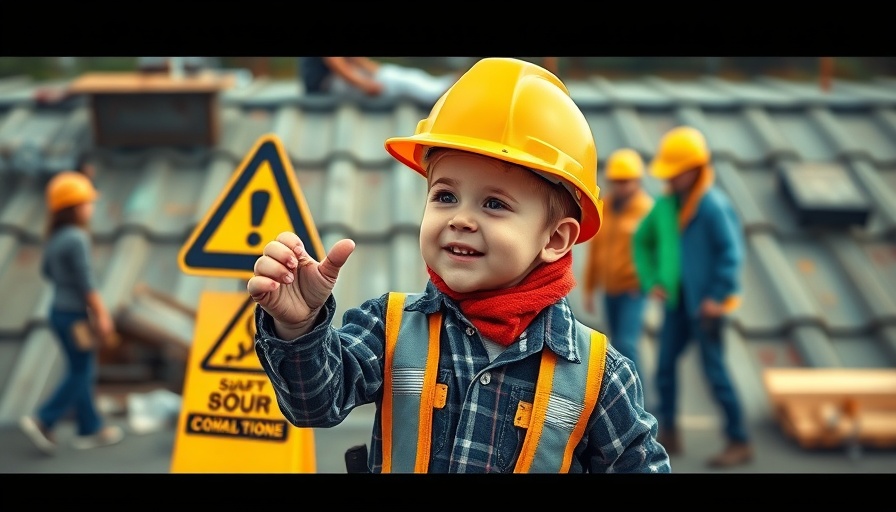
Understanding OSHA's Role in Roofing Safety
The Occupational Safety and Health Administration (OSHA) plays a critical role in enforcing safety standards across various industries, including construction. A roofing job is particularly hazardous, with risks ranging from falls to electrical hazards. In the wake of increasing concerns about worker safety on sites, OSHA's guidelines offer protective measures that every roofing contractor should adhere to. Compliance with these regulations not only enhances the safety of workers but also minimizes the legal risks associated with non-compliance.
In 'When OSHA Comes to the Roofing Job', the discussion provides valuable insights into OSHA's involvement in roofing safety, which prompted a deeper analysis of effective safety practices and compliance measures for contractors.
Common Safety Violations in Roofing
When OSHA inspectors visit roofing sites, they often pinpoint violations that could potentially endanger crew members. Some of the most frequent infractions include lack of fall protection, improper use of ladders, and inadequate safety training. Each of these violations poses serious risks, which can lead to severe injuries or fatalities. Roofing contractors and crews must prioritize understanding these risks and implementing tools and practices that align with OSHA standards. Recognizing the common shortcomings is the first step toward improving site safety.
Best Practices to Stay Compliant with OSHA
To keep your roofing job compliant with OSHA regulations, there are several best practices that contractors should adopt. These include:
Training Programs: Regular training sessions for your crew can help in familiarizing them with safety protocols and the operation of safety equipment.
Personal Protective Equipment (PPE): Ensuring that all staff wear appropriate PPE such as helmets, harnesses, and non-slip boots is non-negotiable.
Fall Protection Systems: Installing guardrails, safety nets, or personal fall arrest systems is crucial for protecting workers from falls.
By implementing these practices, contractors not only comply with OSHA but also foster a culture of safety within their teams, which can boost morale and productivity.
How Roofing Professionals Can Prepare for OSHA Inspections
When it comes to preparing for an OSHA inspection, roofing professionals should maintain a proactive stance. Keeping accurate records of safety measures and employee training can greatly improve compliance. It’s also important to conduct routine safety audits of the site to identify and rectify any potential hazards. Not only does this prepare the team for an inspection, but it also enhances the overall safety of the job site.
The Importance of Roofing Tips for Safety
In addition to following OSHA guidelines, roofing contractors should stay updated with industry best practices to ensure their work meets safety standards. Leveraging roofing tips from professionals can guide new and seasoned contractors in effectively managing risks associated with roof repair jobs. Continuous learning allows for the enhancement of skills and safety awareness, benefiting all contractors in the field.
Future Trends: The Integration of Technology in OSHA Compliance
The use of technology is transforming how safety compliance is managed in the roofing industry. From drone inspections to digital safety management systems, these advancements streamline processes and enhance safety performance. As OSHA continues to evolve their standards, ensuring that technology aids compliance can significantly improve safety outcomes on roofing jobs.
In conclusion, understanding and applying OSHA's regulations is vital for any roofing contractor. With safety as a priority, employing best practices, preparing for inspections, and staying informed about the latest roofing tips can lead to safer job sites and ultimately, a more successful business.
For roofing contractors and workers alike, embracing these insights not only benefits their personal safety but also enhances their professional reputation in the industry. Start prioritizing safety today to secure a sustainable future in roofing.
 Add Row
Add Row  Add
Add 




 Add Row
Add Row  Add
Add 








Write A Comment